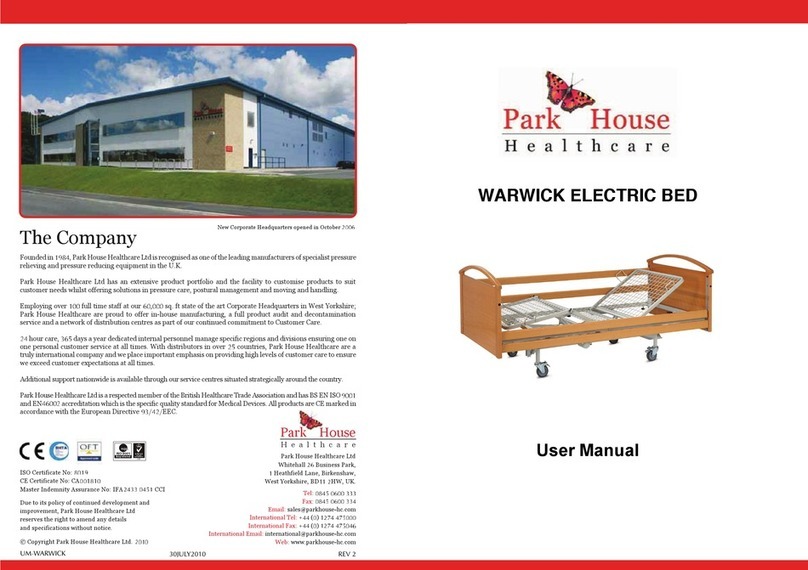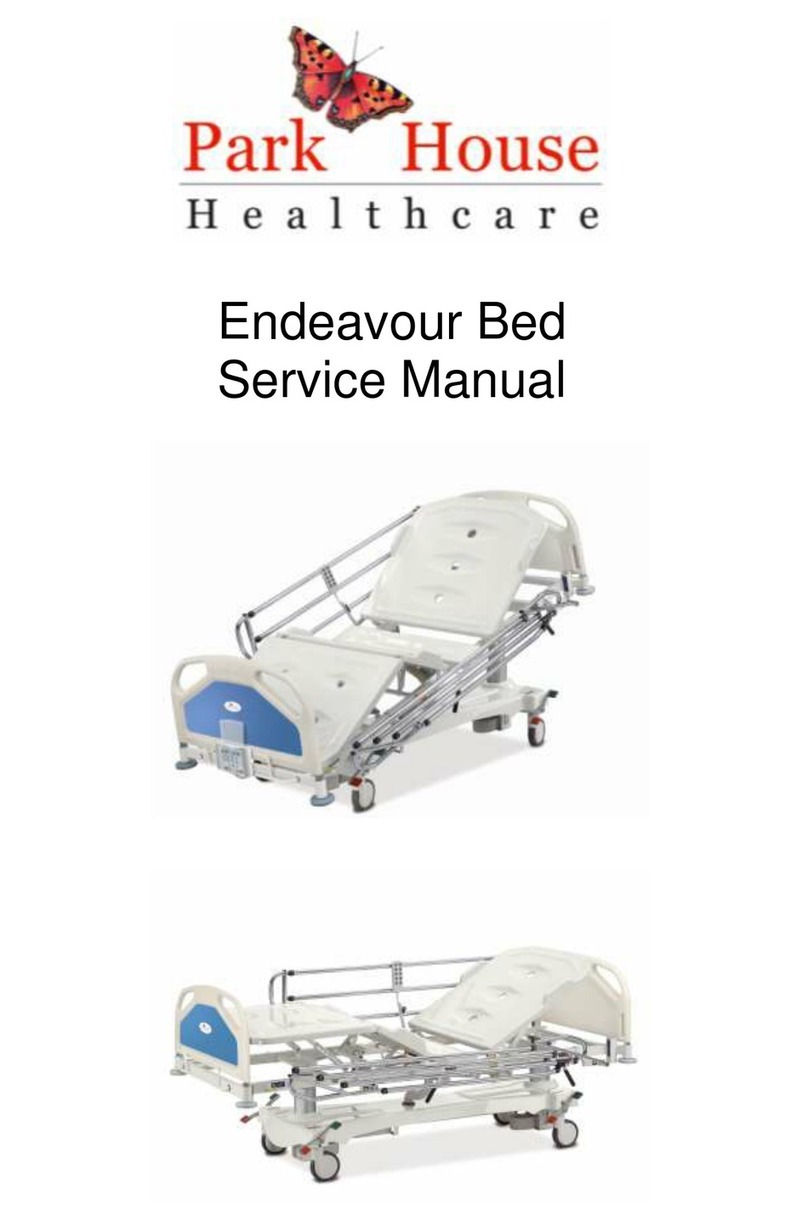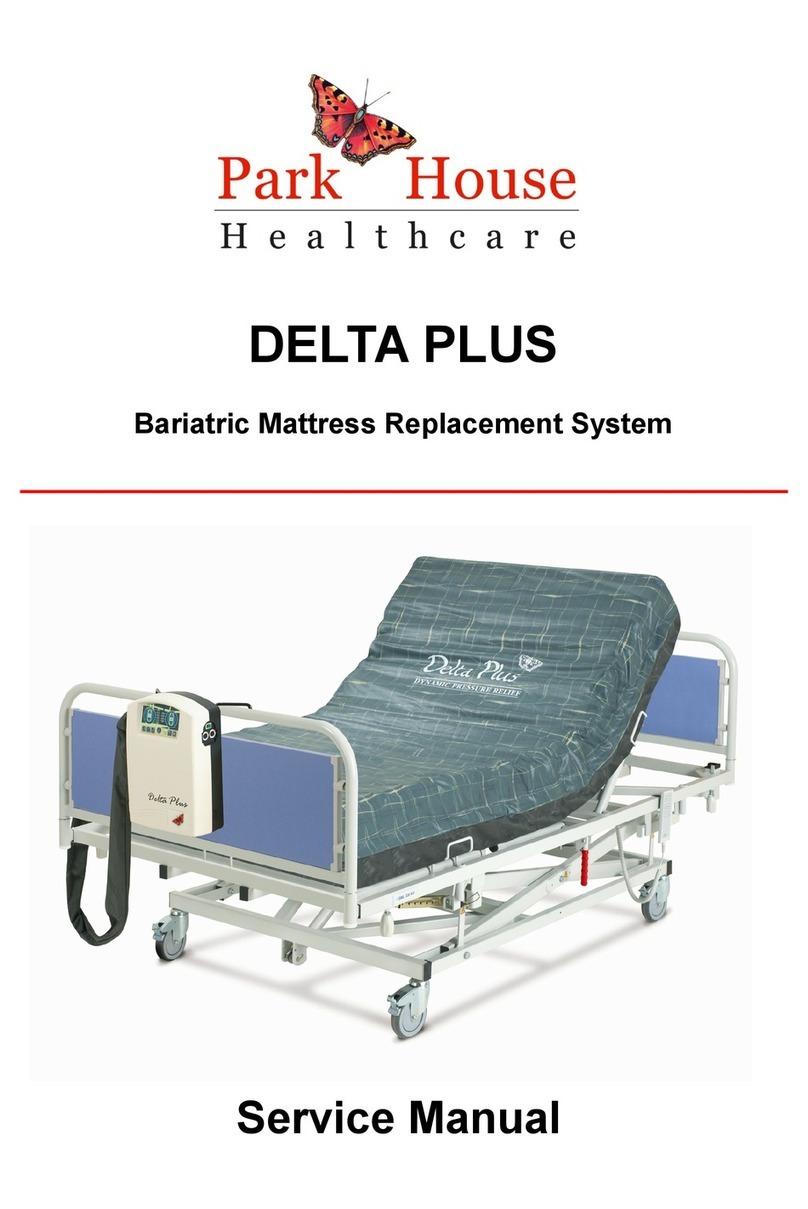
3
1. General Safety Instructions
Before putting this cot into operation, it is very important that this User Manual is read carefully. The manual
contains important information for safe and proper use of the cot. Keep this manual handy for future
reference.
All of the functions of this cot should be fully tested by a competent person before the cot is used.
The cot must not be used if faults have been detected that may injure the patient, staff or a third person, or damage
the cot or the surrounding furniture.
Where necessary, the operating persons are obliged toacquaint the patient lying on the cot with the control functions
that are designed for use by the patient, and their safe usage.
The operating person is obliged, before using the cot, to be confident of the functionality and safe usage of the cot.
The cot may be used only on even and solid floors.
The cot must never be overloaded. Maximum working load - 180 kg (28.3 Stone).
If thereis a patient on the cot, castors must belocked (withthe exception of when travelling with thecot). An unlocked
cot poses risk of injury to the patient when leaving the cot or when supporting themselves.
The height of the mattress platform must be adjusted according to the height and condition of the patient.
This is a single patient cot; no other people should sit on the cot.
When handling the moving parts of the cot, ensure that the patient, other people or objects do not become trapped.
Before cleaning or maintaining the cot, the mains power cable must be disconnected from the mains.
The cot should not be used where there is a danger of explosion or in the presence of flammable anaesthetics.
When maintaining and cleaning the cot in the space between the undercarriage and mattress platform, the
adjustment functions on the handset must be locked to avoid unintentional activation of the mattress platform.
The mains power cable must be placed in a way so it does not get wound around the moving parts or trapped
between them; if the mains power cable is damaged there is a serious danger of injury from electrical current.
Inspections should be made at least once a month for visible wear and tear of all moving parts and cables.
The cot is intended for infants and small children. Ensure that children only have access to the cot under adequate
supervision. Do not allow children underneath the cot while it is in operation.
2. Features
The drives for the adjustment are electric mechanical linear motors with maintenance free permanent lubrication.
The motors are operated by a handset connected to the main control box via a spiral wound cable.
The motors and handset are isolated from mains voltage (230v) and operated at DC 24v low voltage.
3. Installation
The cot should only be assembled by a suitably competent person. The cot is suitable for installation by one person.
When installing more than five cots, two people should be used to complete the installation. They must read and
fully understand all of the instructions contained in this user manual. Do not attempt to assemble this cot if you are
unsure about any part of the instructions, or if any damage or defect can be identified.
The fuse in the mains plug should not exceed 5 amps.
The cot should be located on a level flat surface. Do not site the cot on loose carpet, rugs or floor coverings.
The cables from the mains power supply plug to the main control unit and from the main control unit to the safety
lock-out box must be positioned clear of the lift mechanism and braked castors to eliminate the danger of shearing
or crushing the cable.




































